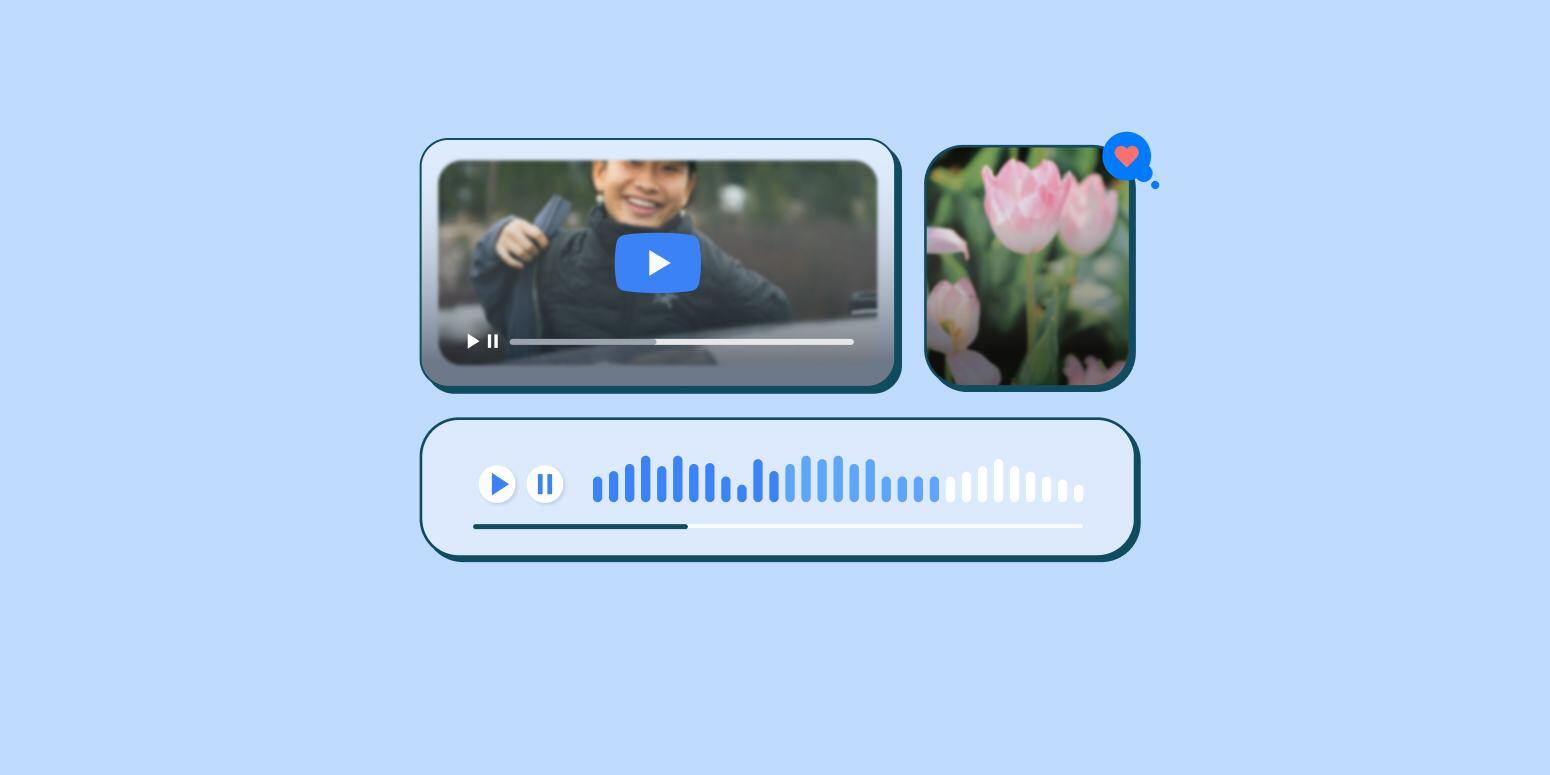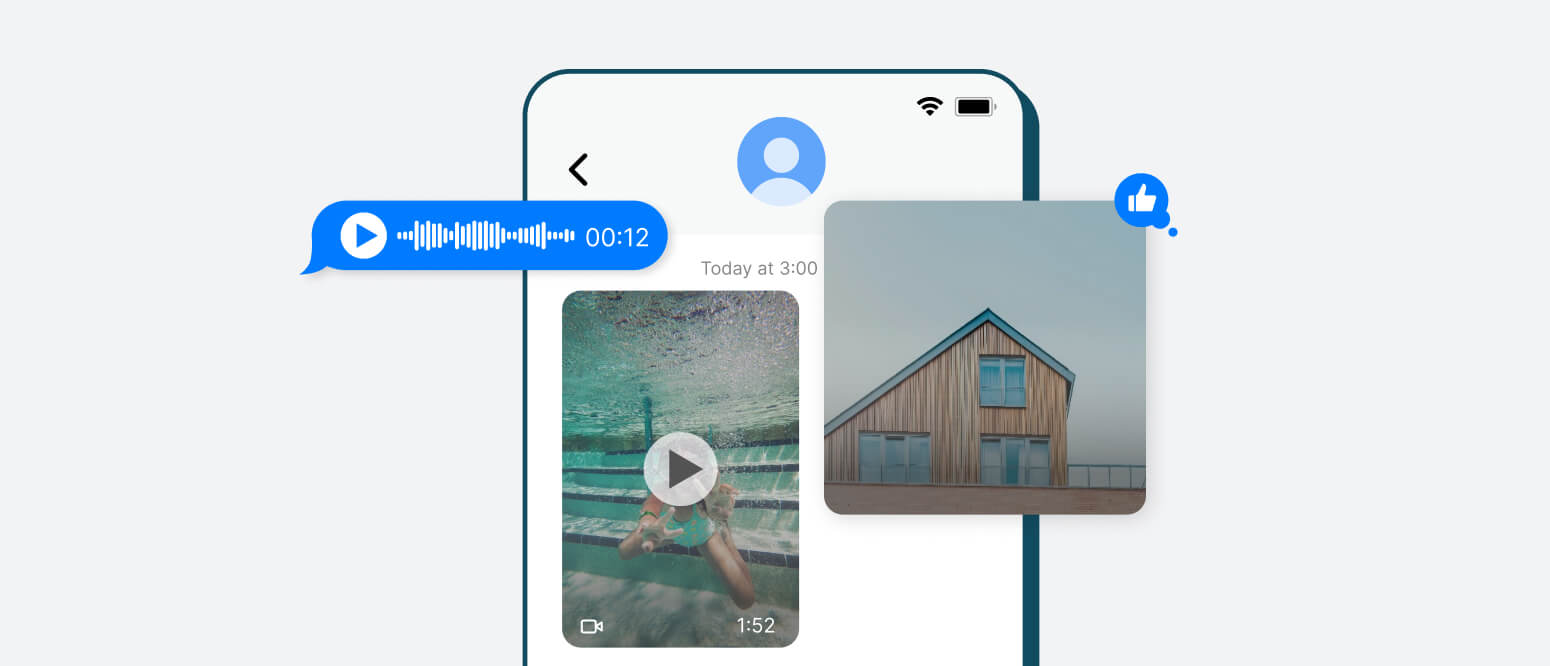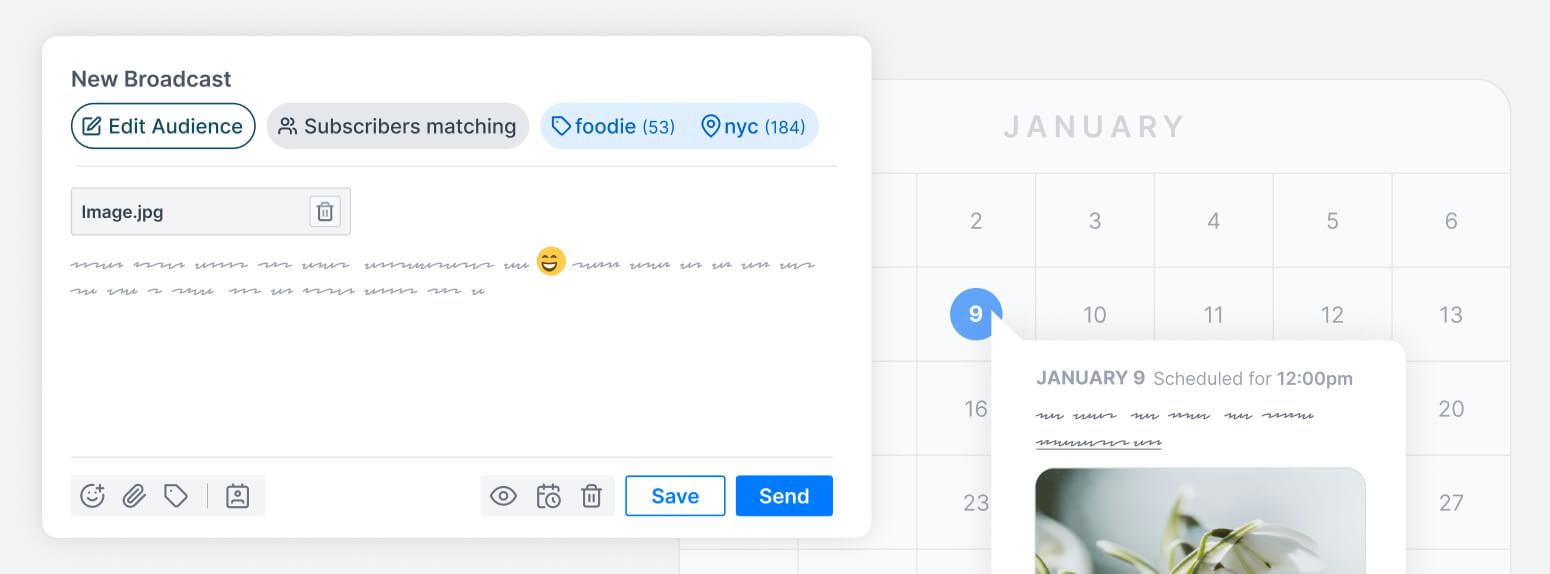
What Is MMS Messaging and How Is It Different from SMS?
You could say text messaging goes all the way back to 1837, when Samuel Morse collaborated with other inventors to create the first practical, operational telegraph. Fast-forwarding to today, it’s hard to imagine a world without text. People around the world send as many as 27 billion text messages every day!
Both SMS and MMS messages provide people with a fast, easy way to communicate. The same is true for businesses looking to connect with those people. But what is MMS messaging, and what is the difference between SMS and MMS? Is one better than the other? Or do they both serve equally important purposes?
Below, we’ll answer these questions and outline the benefits of both methods of communication in the digital age.
Key Takeaways
- SMS (Short Message Service) is text-only and widely supported, making it ideal for quick alerts, confirmations, or plain-text campaigns.
- MMS (Multimedia Messaging Service) supports images, videos, audio, and longer text, offering richer engagement and allowing brands to send visually compelling messages.
- Choose the format based on objective: use SMS for simple, time-sensitive messages; use MMS when you need to stand out with media-rich content.
- Be aware of cost and technical differences: MMS often costs more, may require larger file sizes or data support, and not all carriers/devices treat it identically.
- Combine both for the best effect: A messaging strategy that uses SMS for baseline reach and taps MMS for campaign highlights can drive a stronger connection with your audience.
What Is SMS Messaging?
SMS, which stands for Short Message Service, allows mobile phone users to send instant text messages to one another. SMS messaging is possible thanks to the Global System for Mobile Communications (GSM) established by the European Telecommunications Standards Institute in the 1980s.
The first SMS text message was “Merry Christmas,” sent by engineer Neil Papworth to Vodafone’s director, Richard Jarvis, in December 1992.
Today, SMS is instant, cost-effective, and used by billions of mobile phone users. But it’s also limited to text only, with a maximum of 160 characters.
What Is MMS Messaging?

MMS stands for Multimedia Messaging Service. As you might guess from the name, MMS allows for sending multimedia files in addition to standard text.
MMS is not limited to the 160-character SMS text length, and in addition to text, it can send videos, images, and audio files in a message, opening up a wider palette people can use to communicate with one another.
Like SMS, MMS uses cellular carriers to send messages, but it also requires an internet connection to send media files.
Is MMS the Same as OTT?
MMS isn’t to be confused with over-the-top (OTT) messaging. The two are very similar and often thought to be the same, but there are a few important distinctions.
OTT works through an application you have to download to use. It acts like a platform where only the community of people who sign up to use the app can communicate with one another. OTT relies solely on an internet connection to send text and multimedia files, so it doesn’t utilize cellular networks at all. Examples of OTT applications are WhatsApp and WeChat.
What Are the Main Differences Between SMS and MMS?
SMS and MMS differ in a number of ways, from the file types and sizes they can accommodate to the delivery method and cost. Let’s break down the key differences.

Type of Content
SMS is limited to plain text, whereas MMS can include text as well as multimedia content like images, videos, and audio files.
Message Length/File Size
SMS has a limit of 160 characters per message, but many carriers will chain individual messages together to create a unified message made up of more characters. Sometimes, an SMS is converted into an MMS to make a continuous message from multiple SMS texts.
MMS accommodates larger file sizes and isn’t capped at a specific limit. However, carriers may place file size limits, with 300 KB being a standard limit many text plans use. Others have started adopting a 600 KB limit per message, and some plans don’t limit at all.
MMS text may likewise have different limits on different plans, with some specifying a 1,600-character limit and others limiting messages to 1,000 characters.
Message Delivery
SMS messages are sent directly over the user’s cellular network, while MMS may use a combination of the cellular network and the internet. When an MMS message is sent between users on different carrier networks, data is relayed from one network to the other using the Internet.
Cost
In the US, SMS is typically included in mobile plans with unlimited use, though plans may be much more limited in other parts of the world. MMS will usually incur data charges, making it potentially more expensive, but limits on data usage and costs differ from one plan to the next.
User Experience
While SMS is solely text-based, it continues to be widely used for its convenience and speed. Considering most US users can enjoy unlimited texts, cost and availability are the primary drivers.
MMS offers a wider palette of communication. You can use animated GIFs, memes, short video clips, static images, and audio. While this adds the dimensions of sight and sound to near-instant communication, it may come with extra data charges, and there’s the potential for interrupted communications if a user’s internet connection is sketchy.
How Can SMS and MMS Be Effective for Marketing and Other B2C Opportunities?
Both SMS and MMS provide powerful opportunities for companies and individuals to connect to customers, followers, and fans.

Outside of marketing and promotions, companies can use text to provide personalized customer service, support updates and alerts, appointment reminders, delivery notifications, and more. People appreciate the direct line of communication and don’t have to go hunting through emails or direct messages to receive pertinent information.
When it comes to marketing and promotion, text has numerous benefits over other channels.
No Clutter
Social media sites are congested with a flurry of posts. Even if your followers see your posts, they’re often swallowed by the constant stream of other, unrelated posts. With text, you have direct, immediate access to your followers without interruption or interference.
No Algorithm Bias
Social media is controlled by complex algorithms that can favor some accounts over others based on advertising budget, filtered engagement, and biases you may never even be aware of. It’s hard to grow your follower base when you’re not sure what might impact the number of people who can see your posts.
Platform Independence
With text, you have complete control over your account and your followers. Message exactly who you want to, when you want to.
Owning Your Audience
Text removes the middleman from interfering in your connection with your followers. You know that everyone who subscribes to your list is receiving your messages, and there is no added cost involved once someone subscribes. Your followers are exactly that: yours to communicate with.
With SMS and MMS, you can build customer loyalty, connect with everyone or message one-on-one, and create a meaningful, lasting connection with your followers.
With Subtext, creators and thought leaders can take their SMS and MMS channels to the next level using the following features:
- Custom welcome message
- Message scheduling
- Auto-replies
- Drip sequences
- Tailored landing pages
- Keyword-enabled sign-ups
- Audience tags
- Segmented messaging
- Inbox filtering
- Custom voicemails
- Monthly reports
- Live analytics
Want to learn more about what Subtext can do for you? Check out these case studies to see our features in action!
Put SMS and MMS to Work for Your Brand
Both SMS and MMS are powerful ways to communicate with your followers. Whether it’s the simplicity and instantaneous nature of SMS or the added dimension of images, video, and audio to capture your followers’ attention, Subtext helps you connect directly with your customers and fans in a meaningful, impactful way.
Ready to make the most of these marketing channels? Check out what Subtext can do for you, and book a demo today!